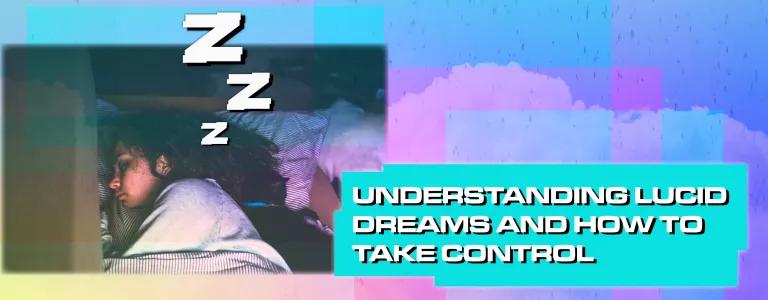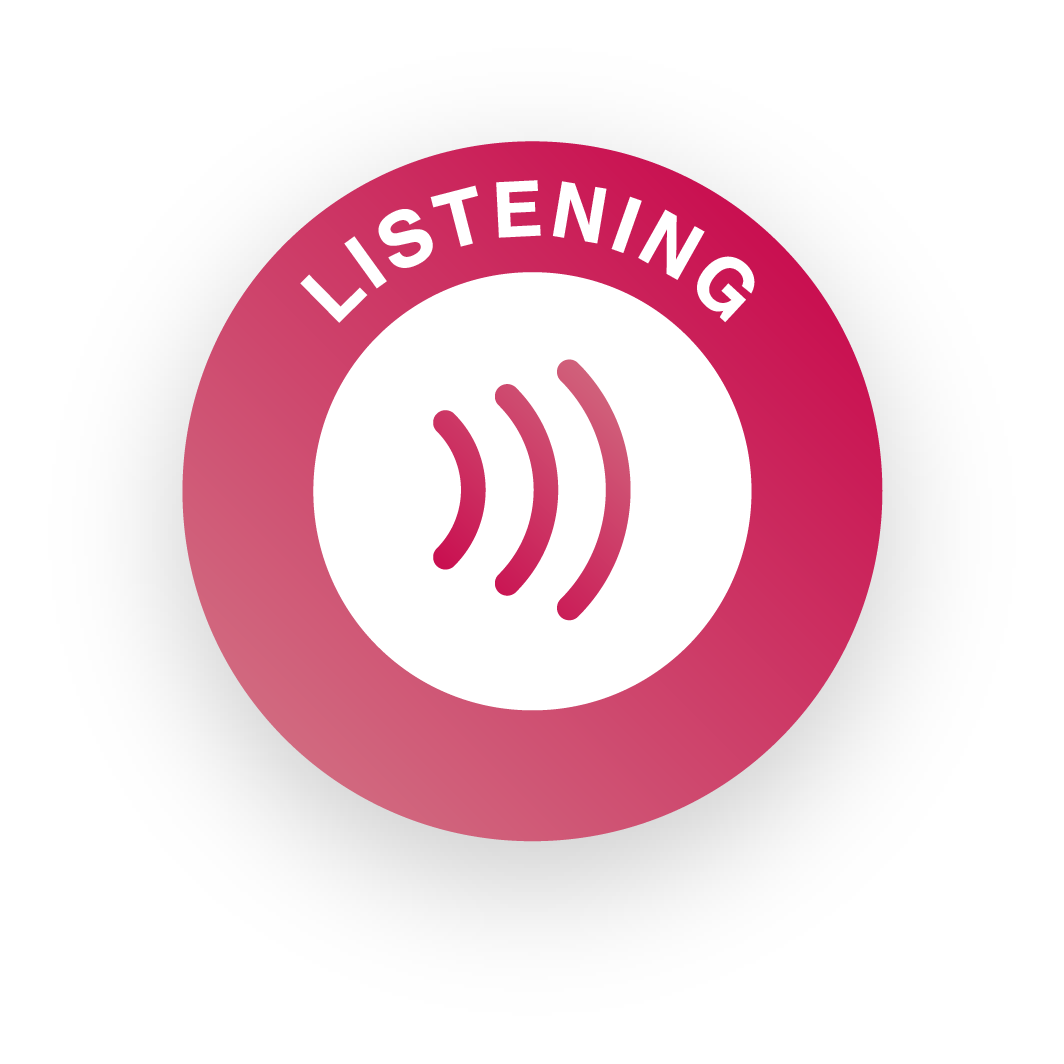
Understanding Lucid Dreams And How To Take Control
Include this article in your Skills Builder Journal. It could help you develop...
It’s the Festival of Sleep Day - a day to encourage people to slow down, relax, and catch some good zzzz’s after a potentially busy festive season. And hey let’s face it, sleep is just the best. There’s nothing like getting cosy under the covers and drifting off to dreamland. But how many different types of dreaming are there? Have you ever heard of lucid dreaming? And did you know it’s the type of dreaming you can control?
What is lucid dreaming?
Usually, when you’re in a dream cycle, you’re deep in it and won’t realise until you wake up. But lucid dreaming is quite the opposite. It’s a dream in which you’re both (kind of) conscious and asleep. Where you can interact with, direct, and communicate with your unconscious. Weird, right? Well, maybe not! According to a lucid dream study, 55% of adults have experienced at least one lucid dream, and 23% experience lucid dreaming at least once a month or more!
Lucid dreams are also incredibly vivid, and this is because they happen in the Rapid Eye Movement (REM) stage of your sleep cycle, which is one of the deepest stages. So while it may feel like you’re fully awake and conscious, you are in reality flat out of it, and just the part of your brain that allows for self-reflective awareness is awake. It’s pretty cool really.

How can I lucid dream?
There are many different methods when it comes to learning how to lucid dream, and they won’t work for everyone. Here are five common steps to help train your mind to notice your own consciousness, and maintain that consciousness as you enter REM sleep.
Reality testing:
this is a really good way of increasing your metacognition (being aware of your own thought processes and understanding the patterns behind them), when you’re awake, which means a higher possibility of it increasing during your sleep too. Several times throughout the day, follow these steps:
First, ask yourself, “Am I dreaming?”
Then, check your environment to confirm whether you are dreaming or not.
And finally, notice your consciousness and how you’re engaging with your surroundings.
How do you ‘notice your consciousness’? Use the things around you! One of the most popular reality checks is your breathing. Close your mouth and pinch your nose (for a few seconds). If you can still breathe, you’re dreaming. Take a look in a mirror - does your reflection look normal? Can you put your hands on something solid like a wall or a table and feel it under your palm? Is there a clock nearby? Concentrate on the time - if you’re awake, the time will barely change, but in a dream, the time on a clock will constantly change. It’s recommended to only pick one of these things to do multiple times throughout the day.
Wake back to bed (WBTB):
this is one of the most popular lucid dreaming techniques and has been suggested as a ‘dream hack’ for people who want to fast track their lucid dreaming abilities. This one’s not for a school night though...
First up, go to bed as normal. But set an alarm for about five hours later - this is so that you will interrupt your REM cycle.
When your alarm goes off, wake up and do a quiet activity (like reading) for about thirty minutes to make your mind alert, but not one that over-stimulates you enough to make falling back asleep impossible.
After thirty mins or so, go back to bed with the full intention of dreaming. As your brain is already on alert mode, you should be able to use your visualisation skills to get back to where you left off when you woke up!

Mnemonic induction of lucid dreams (MILD):
Dr. Stephen LaBerge, a lucid dreaming pioneer, created the MILD technique in 1980, and it was one of the first methods that used scientific research to induce lucid dreams.
It’s all about setting intentions to do something later. So, throughout the day make the intention to remember you’re dreaming, when you’re asleep. And, if you wake up from a dream during the night, make the intention to remember your dream as soon as you’re awake.
If you sleep through the night, as soon as you wake in the morning, go through all the dreams you can remember. Do this several times, remembering every detail until you know it like the back of your hand. In particular, remember anything that is irregular or strange in the dream, that wouldn’t happen in real life - like being able to fly. This is called a dreamsign.
The next time you go to sleep, think about returning to that dream, and using the dreamsign to remember that it is a dream. By recognising that this is something that only happens in a dream, you should become lucid and see that your surroundings are not real. Recite a phrase similar to ‘the next time I dream, I want to remember that I am dreaming’ over and over in your head until you fall asleep.
Like WBTB this technique oftens works best if you wake yourself up from a dream - so why not set an alarm for five hours after your sleep. Again, probably not one for a school night!
Wake Induced Lucid Dreams (WILD):
the WILD technique comes from Tibetan Dream Yoga - a Buddhist philosophy used as a path to enlightenment. It involves going from a physically awake state straight into a lucid dream. It’s quite tricky, but can be done...especially if you’re big into meditation and yoga.
The best time to do it is actually after a good sleep - so think first thing in the morning. The first thing you need to do is get into a relaxed position (most likely the ‘corpse pose’ from yoga, which essentially just means lying on your back with your arms by your side, all limbs super loose) and close your eyes.
Clear your mind and take in the darkness of your closed eyelids. If you have any thoughts, observe them and then let them go, don’t interact with them too much. Focus on your breathing - breath in for a count of four and hold it for a count of seven, then breath out for a count of eight. Do this about ten times, and you should be completely relaxed!
After a while, you’ll start to feel hypnagogia - which is the state just before you fall asleep, where you usually start to see vague blobs of purple and green, or slight luminescent colours against your eyelids. If this happens, allow it! Enjoy it! Become mesmerised by the colours and go deeper into it. You may start to hear sounds or physical sensations and this is normal, just make sure to hold on to the fact that you are awake, and don’t fall asleep.
Soon, it will start to feel more like a dream, and when that comes, embrace it, but keep telling yourself “I am dreaming, I am dreaming, I am dreaming” - this will stimulate your mind enough to stay awake, but remember that you are also in a different state.
At this point, it’s time to start building the lucid dream around you. Remember old dreams you’ve had and try to visualise them, remember certain characters or landscapes, and put yourself right in the middle of the action….and enjoy it! You’re lucid dreaming!
Dream journaling:
this is a simple technique to start your lucid dreaming journey. By writing down your dreams once you’ve had them, it means you become more used to remembering what happens in your dreams, and the dreamsigns that occur. This then means you’ll be more aware of what is a dream and what is reality, and should be able to slip into lucid dreams more often as you can understand your surroundings more.
So, there you have it. Five ways to feel like you’re in the movie Inception (lol) and take control of your dreams! Are you going to try them? Or are you already a lucid expert? If you are, let us know over on our Insta @NCS!


